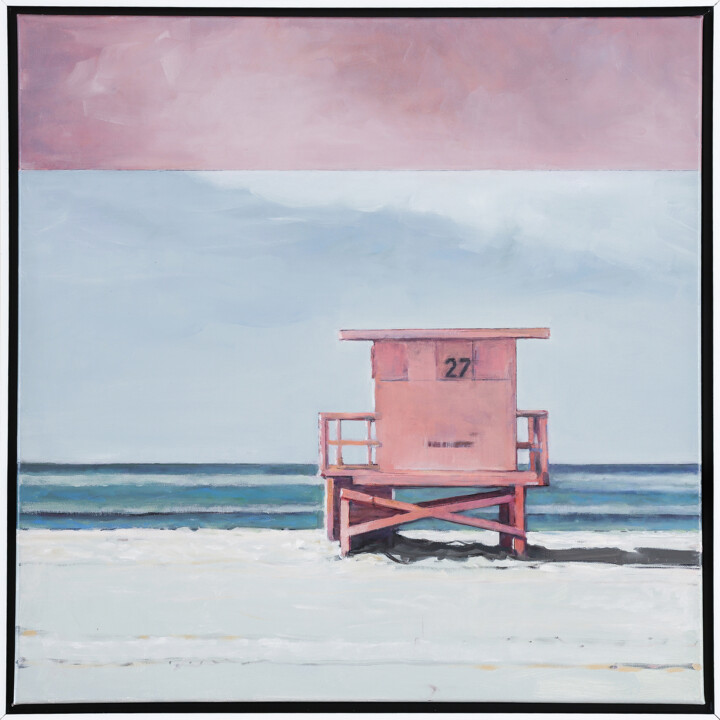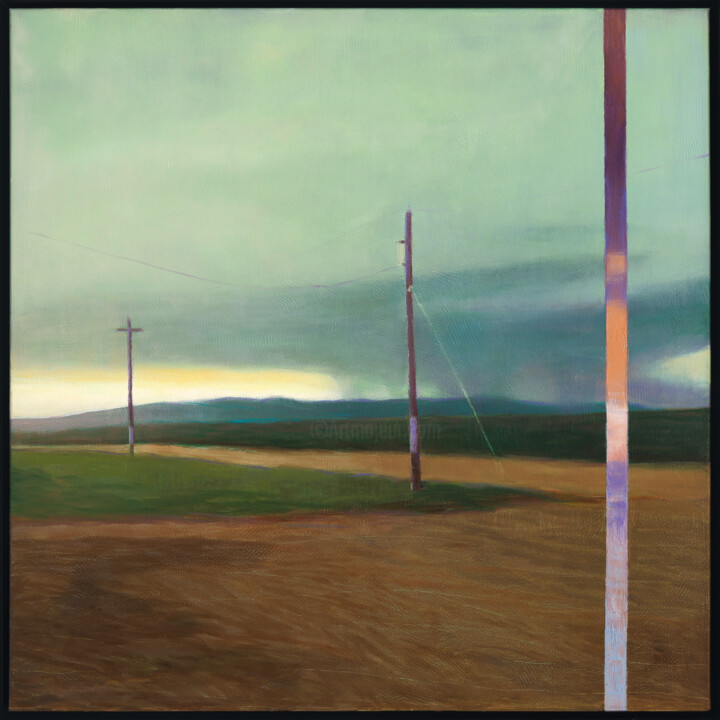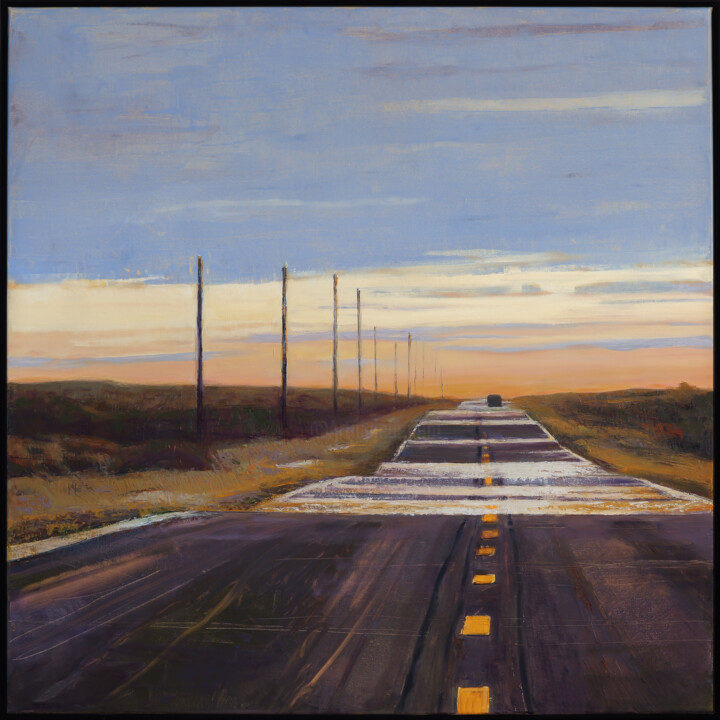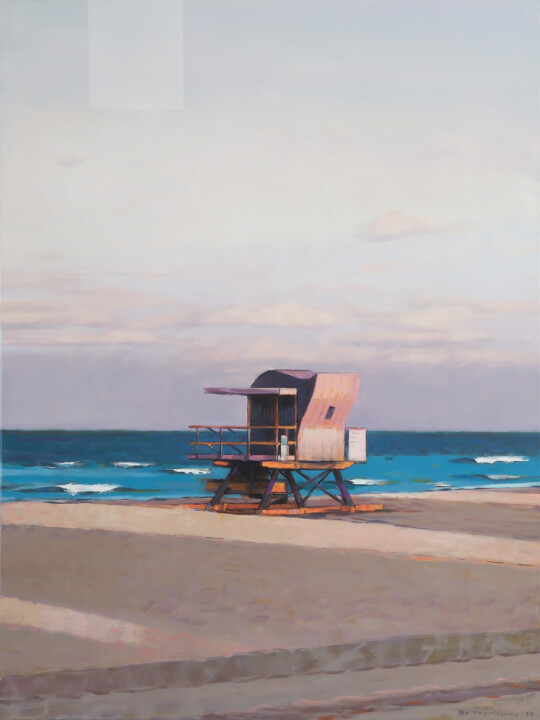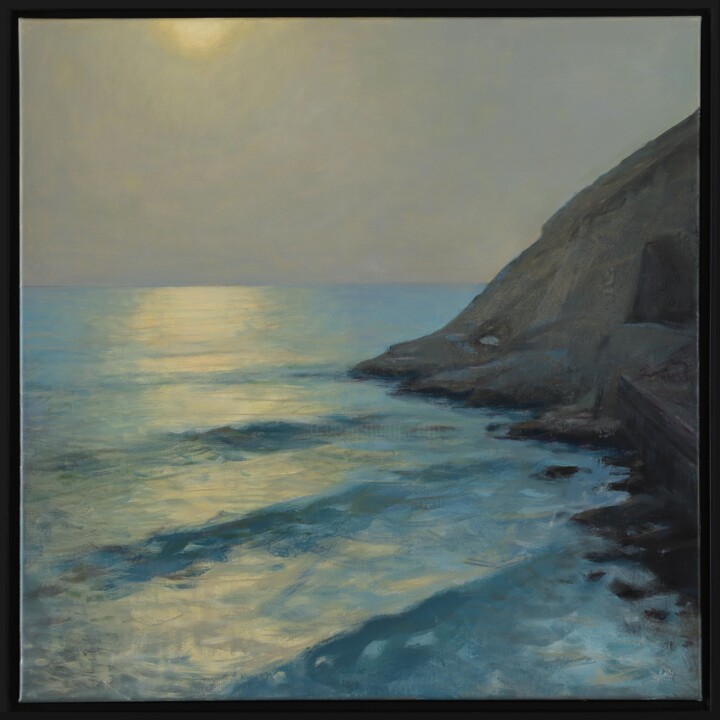What inspired you to create art and become an artist? (Events, emotions, experiences…)
In a way, my destiny to become an artist was predetermined—I was born into a family of artists. The only question was which creative path I would take.
In my youth, I was very drawn to fashion design, but I ended up studying graphic design, and later book illustration, at the Kyiv Academy of Arts. I applied all the knowledge I gained there during my 20+ years working as an illustrator and designer in advertising, eventually becoming a creative director at several agencies, and later founding my own.
What brought me back to painting was moving from Europe to the United States. This new environment, and the opportunity to start fresh, reignited my passion for painting and also led me to photography. In Florida, I discovered the beauty of flat natural landscapes—beaches, roads—and I’ve been exploring that theme for the past ten years.
What is your artistic experience, and which techniques or themes have you already experimented with?
There was a period when I focused on symbolic painting—emotionally charged images that haunted me and had to be released onto the surface.
Today, I balance between landscapes and abstraction, exploring both natural and urban environments.
Which 3 aspects make you different from other artists and make your work unique?
I believe it’s the variety of subjects I explore and my constant experimentation with techniques.
Each work or theme requires me to invent a method that best conveys the idea. That’s why my practice spans a wide range of directions—but always with a recognizable style.
Where does your inspiration come from?
From travel, conversations, inner experiences, visiting exhibitions, and art history. And sometimes, it’s simply a coincidence—something random that resonates with me in the moment.
What is your artistic approach? What visions, sensations, or emotions do you aim to evoke in the viewer?
It depends on the subject of the work, but generally, I aim to evoke calm and serenity—sometimes irony, or a sense of speed. Since I’ve been living far from my homeland, painting has become a refuge from the anxiety I feel for my loved ones and my country, especially over the past 10 years of war. In a way, it’s a form of art therapy. I try to paint what we all need so much—confidence, peace, relaxed contemplation, and a sense of inner stillness.
What is your process for creating artworks? Is it spontaneous or do you follow a long preparatory phase (technical planning, inspiration from classical art, etc.)?
I enjoy a kind of planned chaos in my work. I use sketches, photo references, and the computer to explore colors and compositions. But then the painting process itself starts to suggest new nuances—it’s important to listen and respond to them in the search for honesty. A successful painting should radiate truth—only then can it be truly loved and end up hanging not just on my own wall! :)
Do you use a specific technique in your work? If so, can you explain it?
I prefer working on rigid surfaces, such as wooden panels or canvas mounted on a hard backing. I don’t like the vibrations of stretched canvas on a traditional frame, especially since I often use a palette knife and various types of scrapers to create natural textures. One of my favorite tools, for example, is old credit or hotel key cards.
Are there any innovative aspects in your work? Can you tell us what they are?
I search for the abstract within the real. I enjoy discovering striking fragments of reality to create abstraction. I like when the viewer is first intrigued, and after spending some time with the piece, smiles at their own realization.
Do you have a preferred format or medium? If so, why?
I really like medium-sized square formats—around 90 to 100 cm—for their versatility and balance. This size also allows me to complete a piece relatively quickly, which is important for preserving the freshness of the initial impression. Sometimes I even prefer to leave a painting slightly unfinished rather than overwork it. In my view, only every third or fourth work turns out truly successful—when the idea, the technique, and that elusive presence, that bit of magic (which often isn’t even up to me), all come together.
Currently, my favorite mediums are oil and acrylic. When I worked as an illustrator, I mostly used watercolor and pastel.
Where do you create your works? At home, in a shared studio, or in your own studio? And how do you organize your creative process in that space?
I don’t like wasting time, so I’ve always tried to work close to where I live. Right now, I work in my own studio with plenty of natural light coming in from two walls. I work best when I can immerse myself in the process alone, with some background music playing.
Does your work require you to travel to meet new collectors, attend art fairs or exhibitions? If so, what does that bring to you?
I travel quite a lot and visit even more exhibitions and museums. Analyzing trends—both current and historical—is one of my favorite topics to think and talk about. Recently, with the growth of online sales, collectors often “visit” virtually, and of course sometimes they come in person to the studio.
How do you envision the evolution of your work and artistic career in the future?
I’m increasingly interested in complex formats, from diptychs to polyptychs. I'm also inspired by the idea of creating more monumental canvases and 3D solutions. I think this could evolve into a new type of sculpture using color—especially since I already have experience working with wooden reliefs. But life moves so fast that it’s hard to say for sure what I’ll be doing in a few years. I keep my door open, as they say in America!
What is the theme, style, or technique of your most recent artwork?
I’m working on several series simultaneously, which allows me to shift focus, analyze what’s been done, and find fresh solutions for future works. One of the recent themes is a solitary abstract cloud with a colored stripe crossing through it—like a kind of glitch or visual error. I think this combination works well through the contrast of form and color. It’s one of the approaches I’m exploring in my search for a contemporary painterly language, which I plan to use in other narratives as well.
Tell us about your most important exhibition experience.
I’ve taken part in many exhibitions, but I believe the most important one is still ahead of me!
If you could invite one famous artist (dead or alive) to dinner, who would it be? How would you suggest spending the evening together?
There are several people I’d love to invite, but if I had to choose just one, it would probably be Gerhard Richter. I’m deeply impressed by his artistic evolution and the directions in painting he has pioneered. I would be really interested to hear what new things he still wants to explore in the future.





 Olimpia Gaia Martinelli
Olimpia Gaia Martinelli

